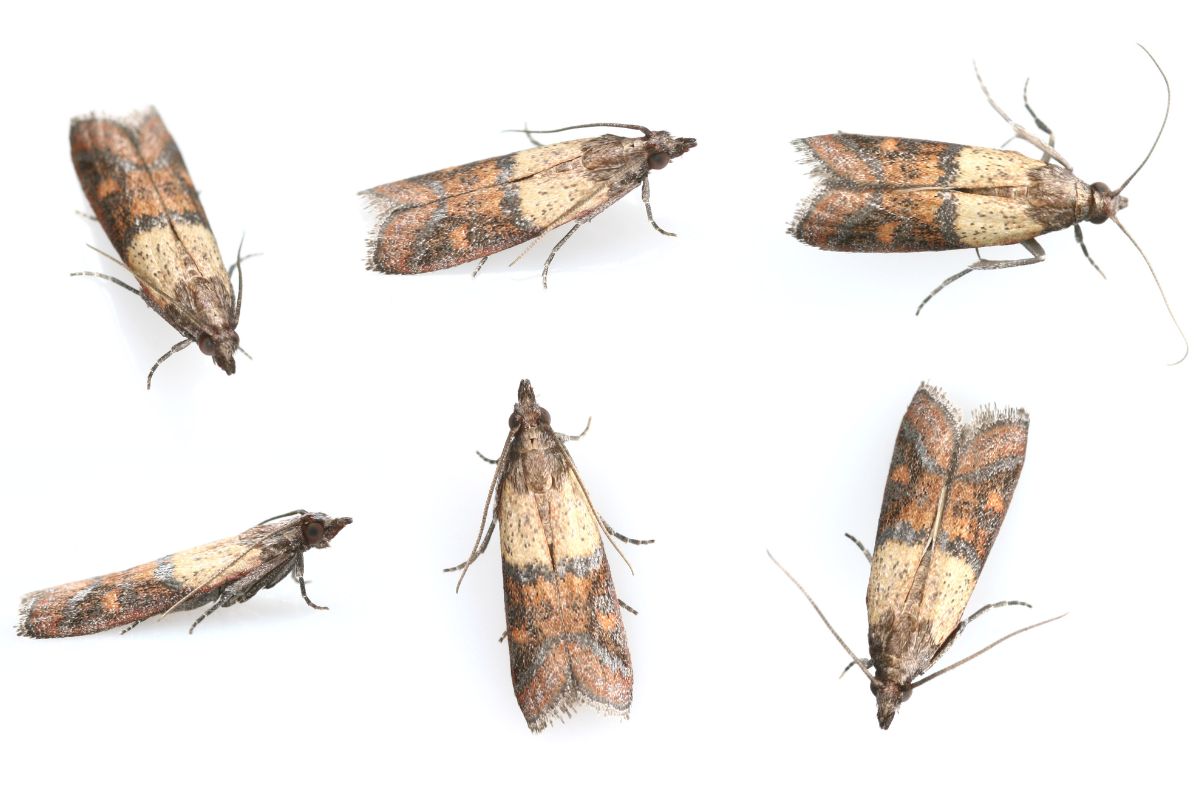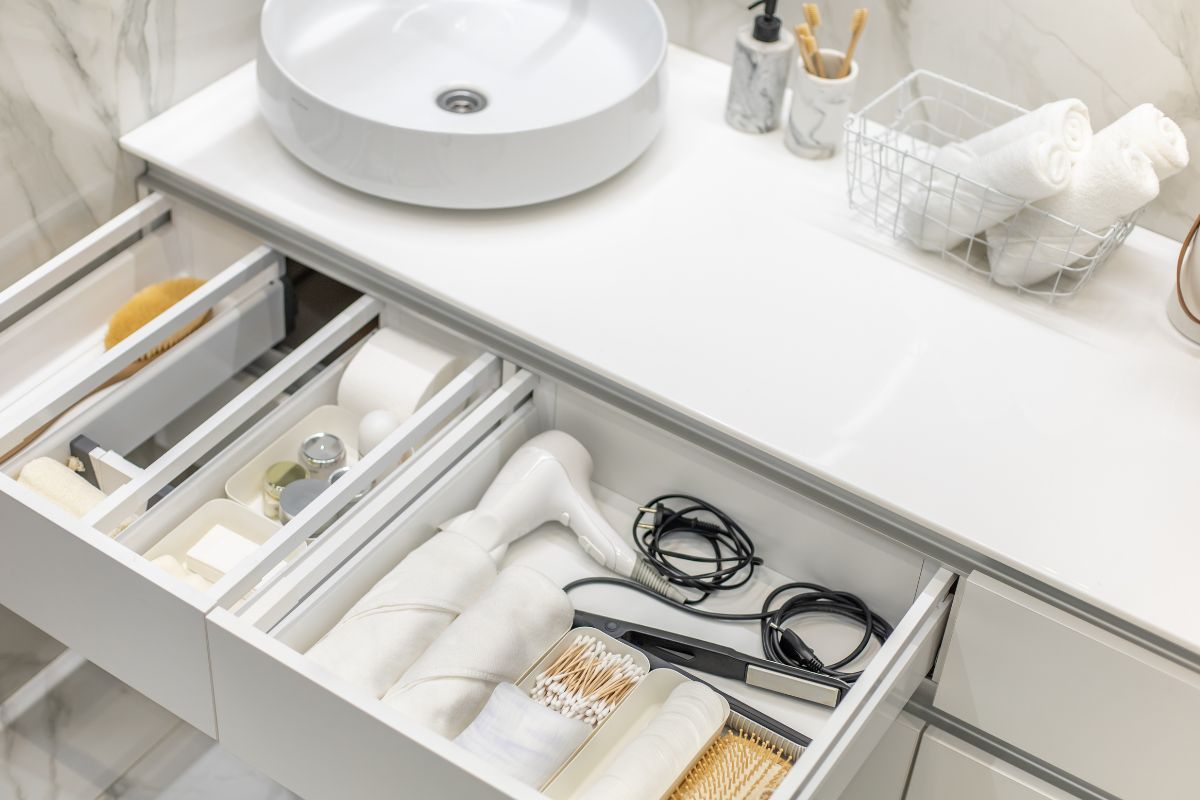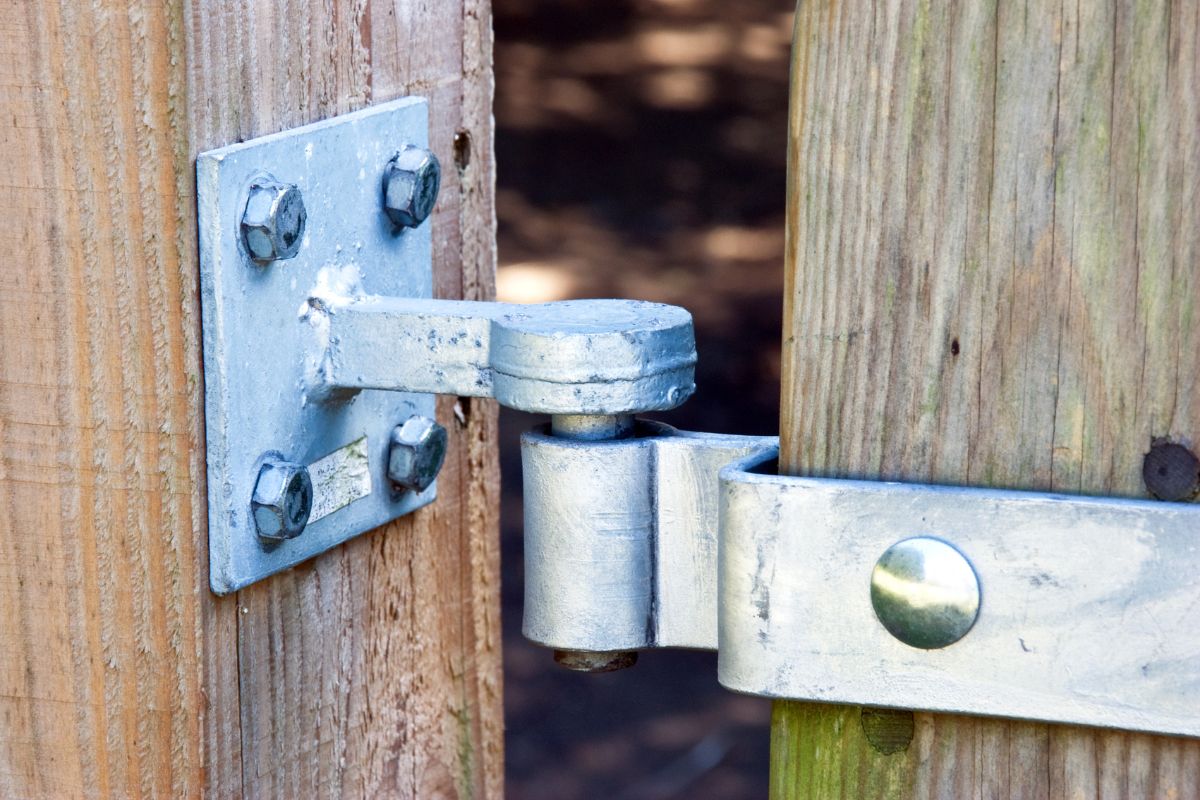Ugh. I’m all for unexpected visitors dropping by the house, you know providing they can ring a doorbell, and take their shoes off before entering the home.
But opening up my pantry to find a disgusting flying moth making itself at home? Oh no, they are not welcome at all.
They’ve simply got to go. There’s no other way of putting it. Who wants a pantry moth infestation?

No one. That’s who. And the bad news is, these pesky little things aren’t that easy to kick out once they settle in.
But there are no squatter’s rights when it comes to these critters and I’ve got all the tips and tricks to get these Indian Meal Moths out of your home.
So without further ado, let’s jump into the ultimate guide on Pantry Moths, and how to get them out of your home. After all, they’re not paying rent!
Pantry Moth Appearance
So the very first thing you’ll need to do is identify that you’ve actually got Pantry Moths in your pantry.
You should be able to recognize them as they are about ½ an inch in length, are a brown/tan color and are thin and slender.
Sometimes you might not actually see them straight away, but here are a few signs to look out for that indicate these aggravating critters are making themselves at home in your pantry:
- A rancid smell in your pantry
- Webbing in the corner of the pantry and on your food items
- Larvae – if you see white/yellow little worms, that’s Pantry Moth babies.
- Cocoons
Why Are There Moths In Your Pantry?
Don’t panic, Pantry Moths do not mean that you are not cleaning your home enough. So take a deep sigh of relief, because it’s no reflection on how well you manage your home.
Actually, it’s more likely that your local grocery store is to blame. Something that you’ve purchased was most likely already infested with pantry moths or larvae, and you’ve just relocated their home.
And while you may not think it, given their small size, these moths can actually munch their way straight through your plastic and cardboard packaging!
And when they’re ready for a meal they’re pretty resourceful. They’ll slip through doors, windows, and cracks in your home like a ninja in the night. So you really don’t need to blame yourself.
The only thing that you’ve done wrong is purchase tasty food that these little moths find yummy too.
They need food to survive, and your home is the ultimate goody bag for them, and they’ll try and help themselves to as much pasta, crackers, and cookies as they can.
Are These Moths Harmful?
So, I think we can all agree that the general consensus is that pantry moths are gross. But are they harmful? To humans? Nope. They can’t hurt you, which is one positive at least.
But to your food that you’ve spent your hard-earned money on? Yep, they’re harmful to that.
You’ve got to think that by the time you find a fully grown moth flying around in your pantry, it’s gone through its entire lifecycle. And it’s done it all from the comfort of your tasty treats.
And this is probably a fact that’ll put you off your tea, but those moths can lay as many as 400 eggs each. These white-gray eggs only take a week to turn into larvae who are the real offenders to the food in your pantry.
These little worm-like creatures get pretty hungry while they’re growing big and strong and they will happily help themselves to all the food they can get their hands on. And they stay in this food-engulfing form for a whopping 40-50 days.
How To Rid Your Pantry Of Pantry Moths

Okay, so if you’ve read this far, there’s probably a bit of sweat building on your forehead, or if you’re anything like me, a real churning sicky feeling in the pit of your stomach. How do I get these things out of my pantry? I hear you ask.
And do not fret, because I have all the answers. If you follow the steps below, I can get your home back to being just yours. Let’s evict these disgusting unwelcome visitors once and for all!
Step One – Clear Your Cupboards
This one can hurt a little to hear, but you’re going to have to get rid of everything in your pantry that is made of plastic and cardboard. I know that throwing that much food in the trash can hurt the heart a little bit.
When it happened to me I could hear my purse strings crying for the next month. But alas, it must be done, and honestly, I don’t think I could stomach consuming any of it anyway out of fear of swallowing any larvae.
If trashing your pantry cupboards simply isn’t an option, then you’ll need to inspect absolutely everything and place any questionable items into the freezer and leave them there for a minimum of four days to ensure everything is dead.
Step Two – Take Out The Pantry Shelves
Next, you’ll need to remove the pantry shelves. This is because you’re likely to find a visitor or two hidden away within them.
They’re good hiders these little bugs and they may have cocooned inside rivets and small holes within the shelves.
Step Three – Disinfect Everything
While you can use bleach, and it is often suggested for the bigger jobs, I find that vinegar is much much more effective in this situation.
You’ll want three parts water to one part vinegar and then you’ll pop around 8 drops of peppermint essential oil into the mixture. This is because the smell of peppermint is Pantry Moth Kryptonite. They hate it.
Using this mixture, you’ll want to wipe over absolutely every single nook and cranny of your pantry.
Remember that these moths are hide-and-seek masters, you really need to search everywhere. So make sure that the pantry is smothered.
When you are satisfied with your smothering, you can add some bay leaves to the pantry too. Another weakness of the pantry moth that we will use to keep them away.
And for good measure, I’d also use a pantry moth trap to get any of the Pantry Moths that are determined to extend their visit in your home.
Once you’ve done this you’ll want to grab your vacuum cleaner to suck up absolutely anything that is left in the cupboard. Don’t forget about the ceiling of the pantry either. Yep, they can get there too.
And if you thought you were finally done, I’ve got some bad news for you. You’ll also need to grab yourself a toothpick and poke into all the corners of the pantry to ensure that you don’t leave any cocoons behind.
Once you’re done take your vacuum outside and empty it in the garbage. Don’t empty it inside, because they’ll just make their way back to your pantry again. And as you can see, getting rid of them is a whole lot of effort.
Step Four – Air Out Your Pantry
If you’ve had a Pantry Moth infestation, you need to leave your pantry to air out for a little while before you place food back inside it.
This is because even with all the care and effort that you’ve put into destroying their home, there’s all the possibility that you’ve left a straggler or two behind.
It really isn’t difficult to say miss one singular larvae and if you do, and then restock your cupboards straight away, the whole cycle will start again as that larvae munches away and grows into another Pantry Moth.
When possible, you should try and keep your food out of the pantry for at least a couple of weeks. This way you starve out any remaining critters.
Frequently Asked Questions
Can I Call A Pest Exterminator To Get Rid Of Pantry Moths?
I mean, technically, I guess there is nothing stopping you from calling upon a pest exterminator to try and rid you of your problem.
However, I wouldn’t really recommend it. This is because these pesky annoyances have become pretty resilient to the common agents that are used to exterminate them.
It will be much more effective, and cheaper, to follow the steps above to get rid of your infestation.
Can I Use Pantry Moth Traps To Get Rid Of The Infestation?
Pantry Moth traps can be useful to help slow down the infestation but they won’t rid you of the issue altogether. This is why I wouldn’t recommend only using these traps.
The way they work is by attracting the male moths via pheromones. So you will likely get rid of most of your male moths which can stop any further breeding.
But all those female moths and all those baby moths (larvae) won’t be attracted to the traps. As I say, they can be useful to aid the extermination but they should not be used on their own.
How Long Will It Take For The Moths To Be Completely Gone?
In an ideal world, if you perfectly cleaned and disinfected your pantry, ridding it of every moth, larvae, and cocoon, then you could have your pantry back within a week, maybe two at most.
But the world we live in is far from ideal, and realistically it’s going to take a little bit longer than that.
It’s very difficult to ensure that you catch each and every last cocoon, larvae, and moth, so it’s best to keep the pantry empty for a good few weeks to ensure they are gone for good.
Can Pantry Moths Eat Through Plastic?
Yup, pantry moths can get through both cardboard boxes and plastic. So unless its in glass containers such as mason jars, it’s likely that they’ll find their way through to those items.
What In My Pantry Is Attracting Pantry Moths?
Pantry Moths aren’t exactly fussy eaters. They’ll gladly help themselves to pretty much whatever is going in your pantry. From grain, to rice, to spices, to coffee granules, they’ll give anything a go.
So really there isn’t any food that is safe from these annoying little moths.
However, they do tend to be pretty partial to a bit of bird seed or pet food so you’ll want to keep this out of your pantry and in glassware if it’s possible.
Final Thoughts
No one wants these unwelcome visitors to make themselves comfortable in your home. They help themselves to your food without even asking and they’ll ruin the entire contents of your pantry.
So they’re not even hospitable or unnoticed visitors like say the spiders and that crawl into the deep dark parts of your home.
And once they settle in, they aren’t the easiest to get rid of, as you’ve learned from this article. If you do find them in your pantry, you’ll need to get rid of the entire contents unfortunately.
Then you’ll need to seriously disinfect the cupboards and leave them empty for a couple of weeks to starve out any stubborn pests.
Once you’ve rid yourself of these moths, you’ll want to double check the food your purchasing at the grocery store to ensure that you don’t bring anymore home with you.
- The Woodworkers Guide to Brad Nailers: Everything You Need to Know - September 25, 2023
- How To DIY An Aztec Garden Dining Table [The Easy Way] - October 18, 2022
- Farrow & Ball Pigeon: Is It Right For Your Home? - October 17, 2022








